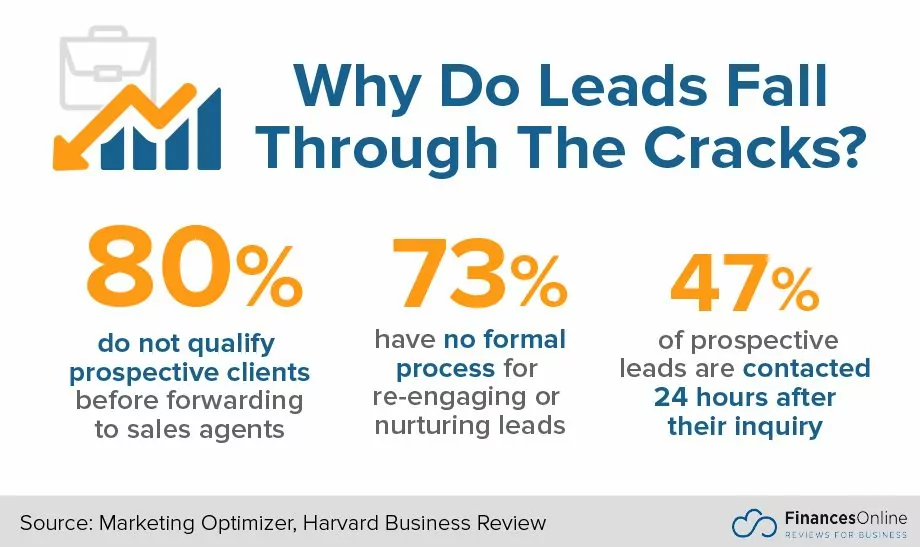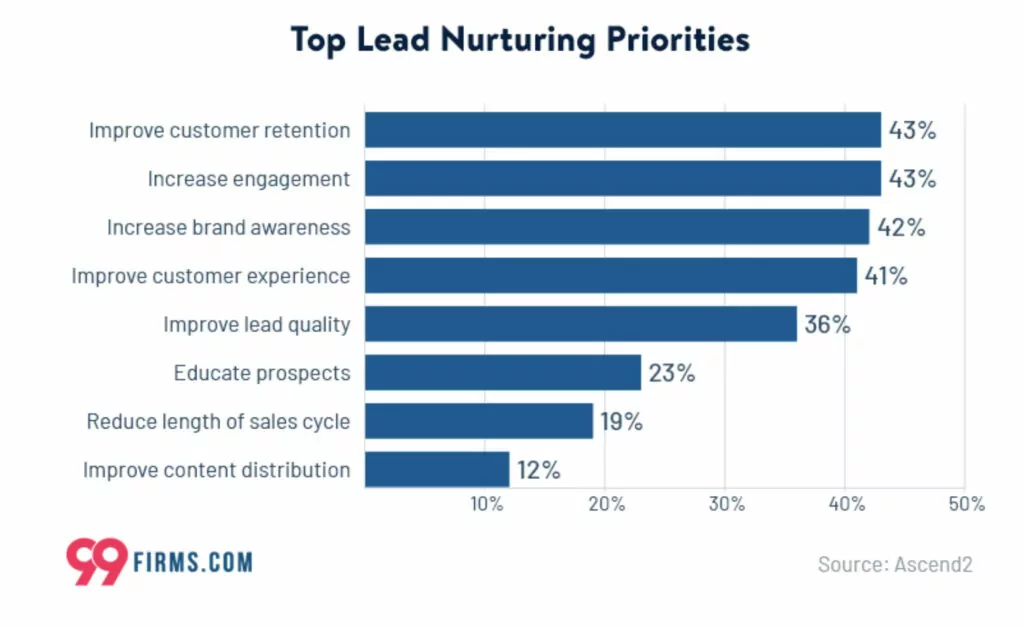Lead management is already a complex process – made more difficult when working with several locations in a franchise. That’s why establishing a robust lead management system is essential for generating, qualifying, distributing, and nurturing leads.
You will learn ten steps for designing and implementing a lead management system in 2022.
Key Takeaways:
- A lead management system ensures you don’t lose leads by qualifying and distributing them promptly.
- Lead qualification and routing are two essential steps in your management process.
- Implement a lead nurturing step to increase your conversion rate, as most leads aren’t ready to buy at the first point of contact.
- Be prepared to continually optimize your system to keep it relevant and effective.
What is a Lead Management System?
Your lead management system is the process you have in place for qualifying, analyzing, distributing, and nurturing incoming leads. A fast and efficient lead management system is vital as 78% of consumers will purchase from the first business to respond.
A successful lead management system helps you increase your conversions by:
- Qualifying leads more effectively
- Speeding up the lead distribution process
- Losing fewer leads
- Unifying your sales and marketing teams
- Connecting franchises
10 Steps to Build a Successful Lead Management System for Franchises
We will explore ten steps you can take to build and implement a successful lead management system in your organization.
1. Outline Your Marketing and Sales Goals
What do you want your lead management process to accomplish? Is your goal to grow your leads, improve lead distribution, or increase your conversations?
Knowing what you want your lead management system to achieve will help guide you as you complete the following nine steps.
2. Understand Your Current Process
A map of your current lead management system will help you analyze what already works – or doesn’t work. Then, you can build upon effective elements to develop a more advanced system while discarding ineffective strategies.
You should also examine your available resources like staff, budget, and technology. You may realize that you need to increase the number of resources you have so that you can accomplish your goals.
Below are three examples of common reasons leads fall through the cracks to help you identify potential issues in your current process.
Source: FinancesOnline
3. Implement Automation
Lead management tools like automation and artificial intelligence are excellent resources you should use in your system to help you streamline the lead management process. About 74% of marketers say the most significant benefit of using automation in marketing is the time you can save.
Find a powerful lead management platform that works specifically for franchises and can manage complex lead distribution and qualification strategies. It can relieve your staff of many mundane or complex tasks by performing data collection and analytics. Then your team can shift their focus on connecting with the customers in a more meaningful way using that information, which will lead to more conversions.
4. Gain Consumer Insights
Once your lead management platform is in place, you can begin collecting customer insights. These insights will help you identify their pain points, needs, and interests to improve the customer experience so you can treat your consumers as individuals instead of just a number in your metrics.
One statistic showed that if a consumer’s interaction with a brand is helpful, they are 1.5 times more likely to purchase from that brand. Therefore, consumer insights will help you offer relevant and valuable information in your communications.
5. Track Your Processes
Tracking your process lets you see how well your system performs as your leads move along the sales funnel. It can give you insights into the performance of your marketing efforts, how consumers interact with touchpoints, how many leads you capture, what channels are most effective for capturing leads, and any other relevant sales data.
This information will help you focus on the most effective channels for lead generation, capturing, and nurturing while investing extra time to rework ineffective strategies.
6. Establish a Lead Qualification Process
One of the most critical steps of your lead management system is your lead qualification process. Only 10-15% of leads will end in a conversion. However, lead nurturing takes time and resources. Therefore, you will want to qualify your leads so that you only invest in consumers who are likely to convert.
Lead scoring is one common qualification method that ranks leads based on their actions and demographics. For example, consumers that visit multiple pages on your website and spend time reading information are prioritized over a consumer that doesn’t interact with your website.
View the following video for more information about the lead qualification step.
7. Set Up an Efficient Lead Distribution System
An automated lead distribution platform will also send leads to the right salespeople for nurturing using pre-set algorithms that divide the leads by demographics, needs, geographical location, and more. Then your sales team members will receive notifications so they can respond promptly, which increases your chance of a conversion.
8. Nurture Your Leads
Only 8% of marketers feel that they have an excellent lead nurturing process. However, an effective lead nurturing strategy will help you generate 50% more sales-ready leads at a 33% lower cost. In addition, you can improve your customer retention and increase customer engagement when you include lead nurturing in your lead management system.
Source: 99Firms
9. Measure Your Lead Management Performance
How do you know if your lead management system is working? Metrics are essential for identifying weaknesses in your new process and understanding what is working.
Here are a few examples of metrics you could use to measure your lead management system:
- Conversion rate
- Engagement levels
- Customer satisfaction rate
- Cost per conversion
- Lead follow-up time
10. Optimize Your Lead Management System
Using the metrics above, you can analyze your system and constantly improve it. In addition, optimizing your strategy helps you stay on top of customer behavior trends and change with sudden societal shifts. A quality lead management platform will collect analytic data about your leads to help you optimize your system.
Find the Best Lead Management System
MXTR offers a lead management system designed for franchises. The platform will help you manage your leads from generation through conversion and beyond. In addition, you can route leads with ease through the system to ensure no leads fall between the cracks.
Schedule a demo to see how our platform can increase your return on investment through seamless lead management.
Feature Image: istockphoto









